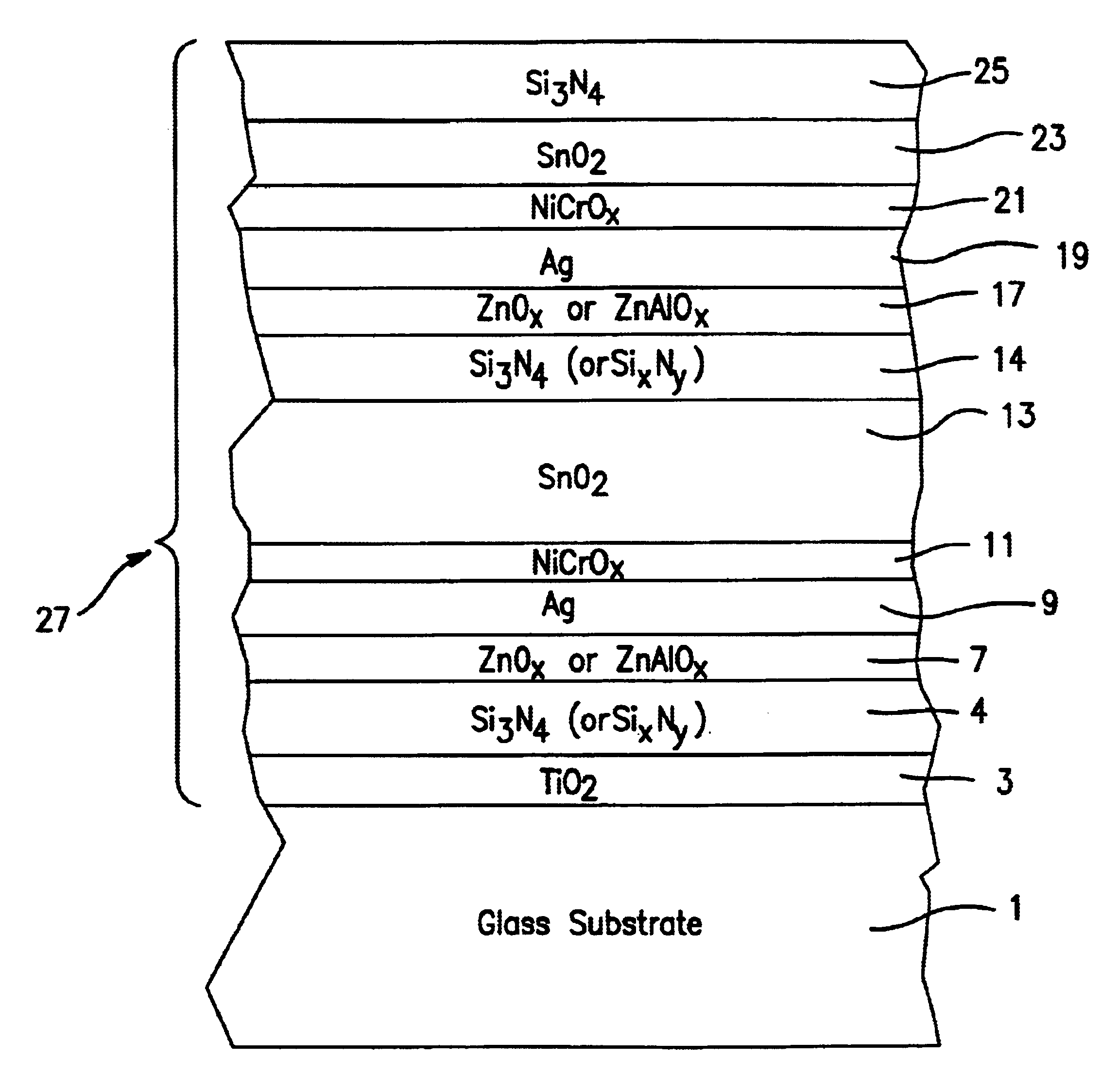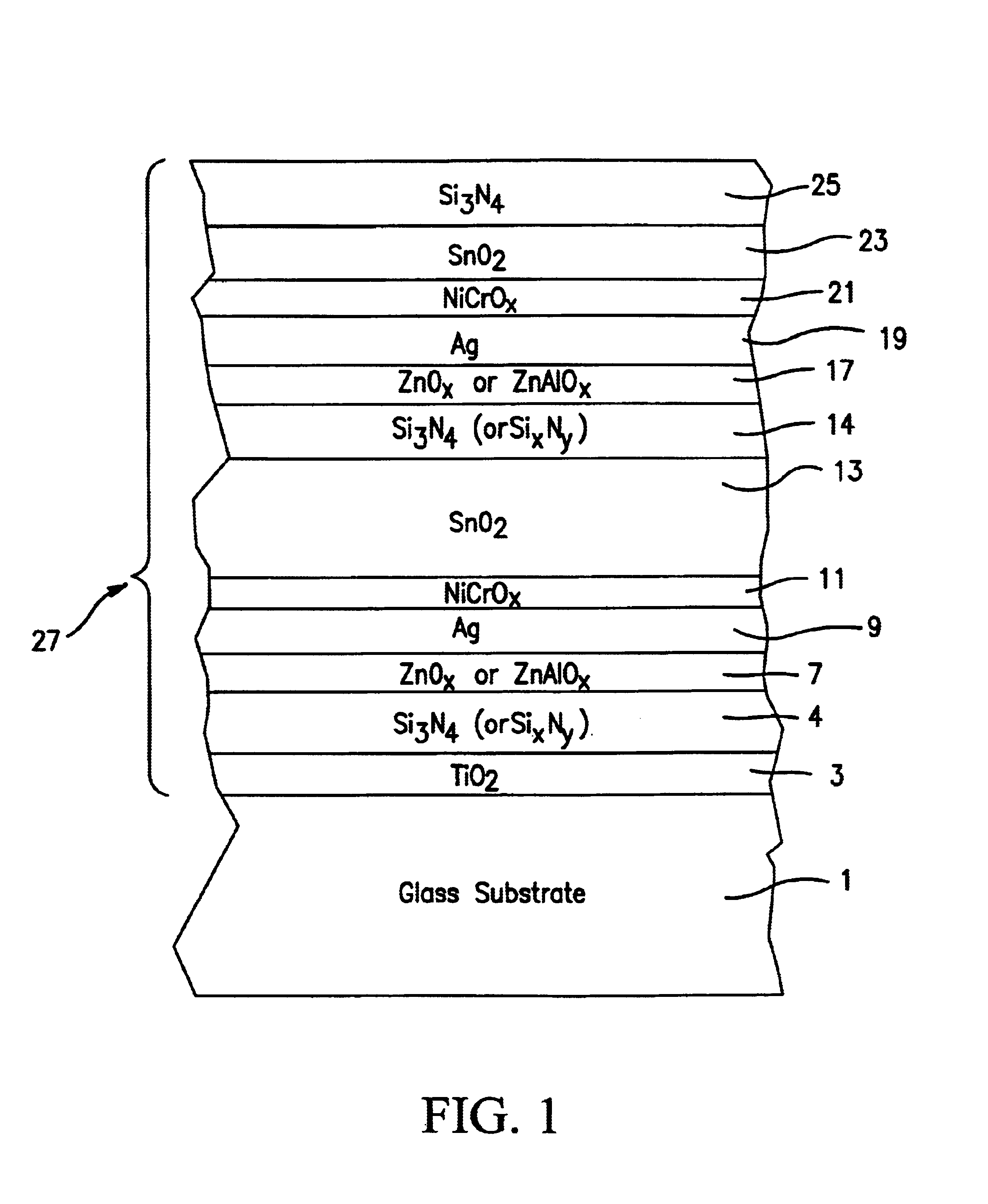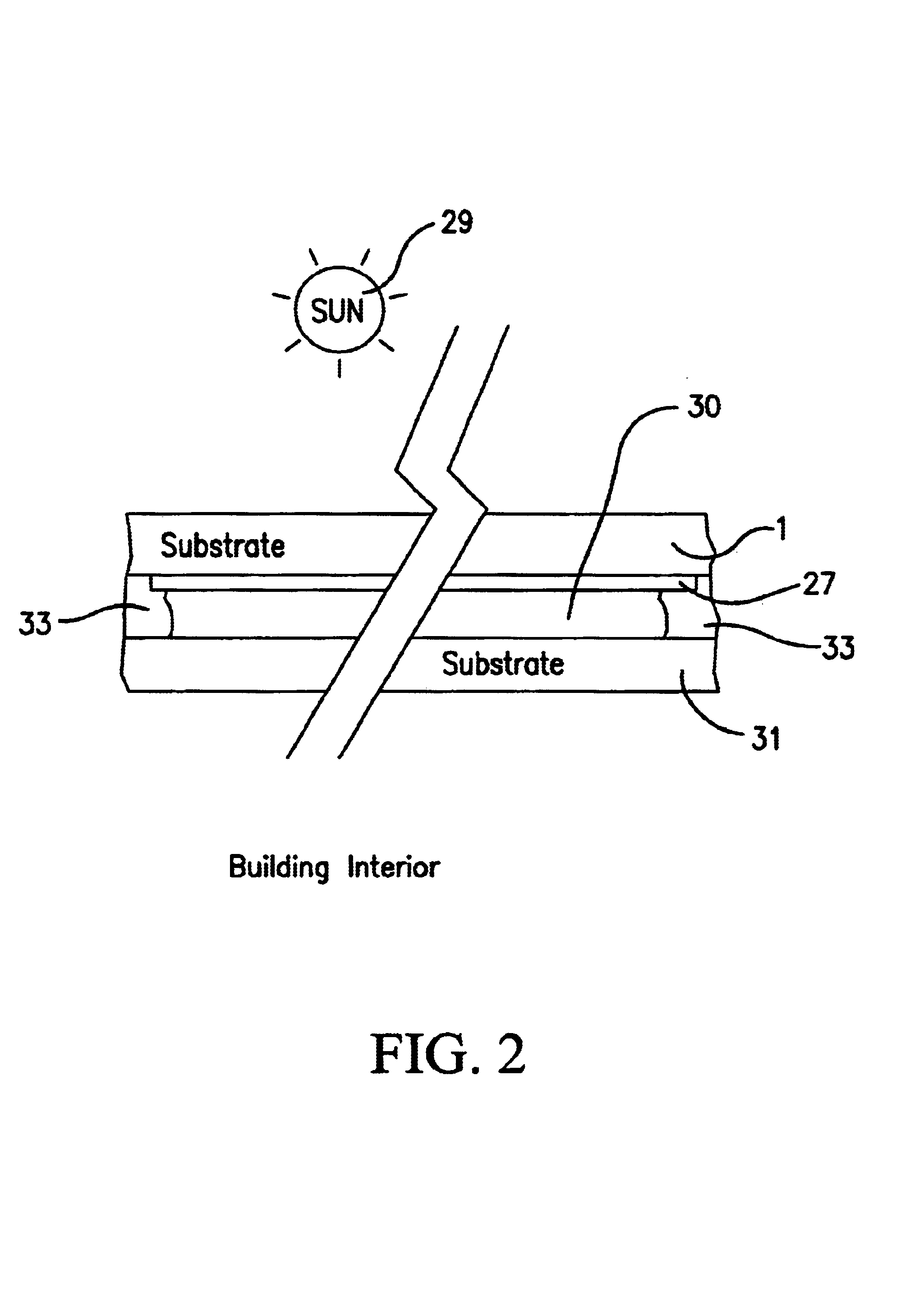Heat treatable coated article with zinc oxide inclusive contact layer(s)
a technology of zinc oxide and coated articles, applied in the direction of coatings, vacuum evaporation coatings, natural mineral layered products, etc., can solve the problems of visible transmission (ty or t/sub>vis/sub>) to drop, and the cost of visible transmission
- Summary
- Abstract
- Description
- Claims
- Application Information
AI Technical Summary
Benefits of technology
Problems solved by technology
Method used
Image
Examples
example 1
[0062]The following examples are provided for purposes of example only, and are not intended to be limiting. The following Examples were made via sputtering so as to have approximately the layer stack set forth below, from the clear glass substrate outwardly. The listed thicknesses are approximations:
[0063]
TABLE 5LAYER STACK FOR EXAMPLESLayerThicknessGlass Substrateabout 3 to 3.4 mmTiOX 40 ÅSixNy113 ÅZnAlOx100 ÅAg 95 ÅNiCrOx 26 ÅSnO2483 ÅSixNy113 ÅZnAlOx100 ÅAg131 ÅNiCrOx 26 ÅSnO2100 ÅSi3N4226 Å
[0064]It is believed, as explained above, that the thin nature of the titanium oxide layer is a significant factor in achieving the fairly neutral a* and / or b* values at high viewing angles such as at 60 degrees off-axis. It is also believed that making the upper Ag layer significantly thicker (e.g., at least 30 Å thicker) than the lower Ag layer helps provide neutral coloration at high viewing angles.
[0065]Moreover, as explained herein, the bottom two silicon nitride layers (SixNy) are prefe...
examples 2-4
Advantages of Si-Rich
[0070]Examples 2-4 illustrate that the use of a Si-rich silicon nitride layer(s) (4 and / or 14). Examples 2-4 were all sputter deposited in approximately the same way as Example 1 above, except that the gas flow was adjusted for the bottom silicon nitride layer 4 so that in Examples 2-3 the bottom silicon nitride layer was Si-rich, whereas in Example 4 the bottom silicon nitride layer was stoichiometric (i.e., Si3N4). In these examples, the silicon nitride layer 14 was Si-rich, and the overcoat silicon nitride layer 25 was stoichiometric. It is noted that the layer 4 was Si-rich in Example 1. The purpose of these Examples is to show that by making the bottom silicon nitride layer 4 silicon rich, reduced sheet resistance can be achieved especially after HT. Example 3 was more Si-rich than Example 2. In the table below, HT 1 means heat treated for about 7.7 minutes in an oven at a temperature of about 650 degrees C., whereas HT 2 means HT for about 5.4 minutes in a...
examples 5-10
Partial Pressure Differences
[0073]Examples 5-10 are for illustrating the surprising finding that by using a lower oxygen gas partial pressure (e.g., oxygen gas partial pressure) for the lower zinc oxide inclusive layer 7 than for the upper zinc oxide inclusive layer 17, improved (i.e., higher) Tvis / Rs ratios can be achieved. The coated articles of Examples 5-10 were deposited in the same manner as Example 1 above, except that in Examples 5-7 the λ setting was adjusted for the bottom zinc oxide inclusive layer 7, and in Examples 8-10 the λ setting was adjusted for the top zinc oxide inclusive layer 17. As will appreciated by those skilled in the art, the lower the λ setting on the sputter coater, the less metallic the resulting layer, the more oxidized (when oxygen gas is at issue) the resulting layer, and the higher the gas (eg., oxygen) partial pressure in the sputter coater for that chamber. The heat treatment in Table below was for about 5.4 minutes in an oven at about 625 degree...
PUM
| Property | Measurement | Unit |
|---|---|---|
| SHGC | aaaaa | aaaaa |
| thick | aaaaa | aaaaa |
| thick | aaaaa | aaaaa |
Abstract
Description
Claims
Application Information
 Login to View More
Login to View More - R&D
- Intellectual Property
- Life Sciences
- Materials
- Tech Scout
- Unparalleled Data Quality
- Higher Quality Content
- 60% Fewer Hallucinations
Browse by: Latest US Patents, China's latest patents, Technical Efficacy Thesaurus, Application Domain, Technology Topic, Popular Technical Reports.
© 2025 PatSnap. All rights reserved.Legal|Privacy policy|Modern Slavery Act Transparency Statement|Sitemap|About US| Contact US: help@patsnap.com



